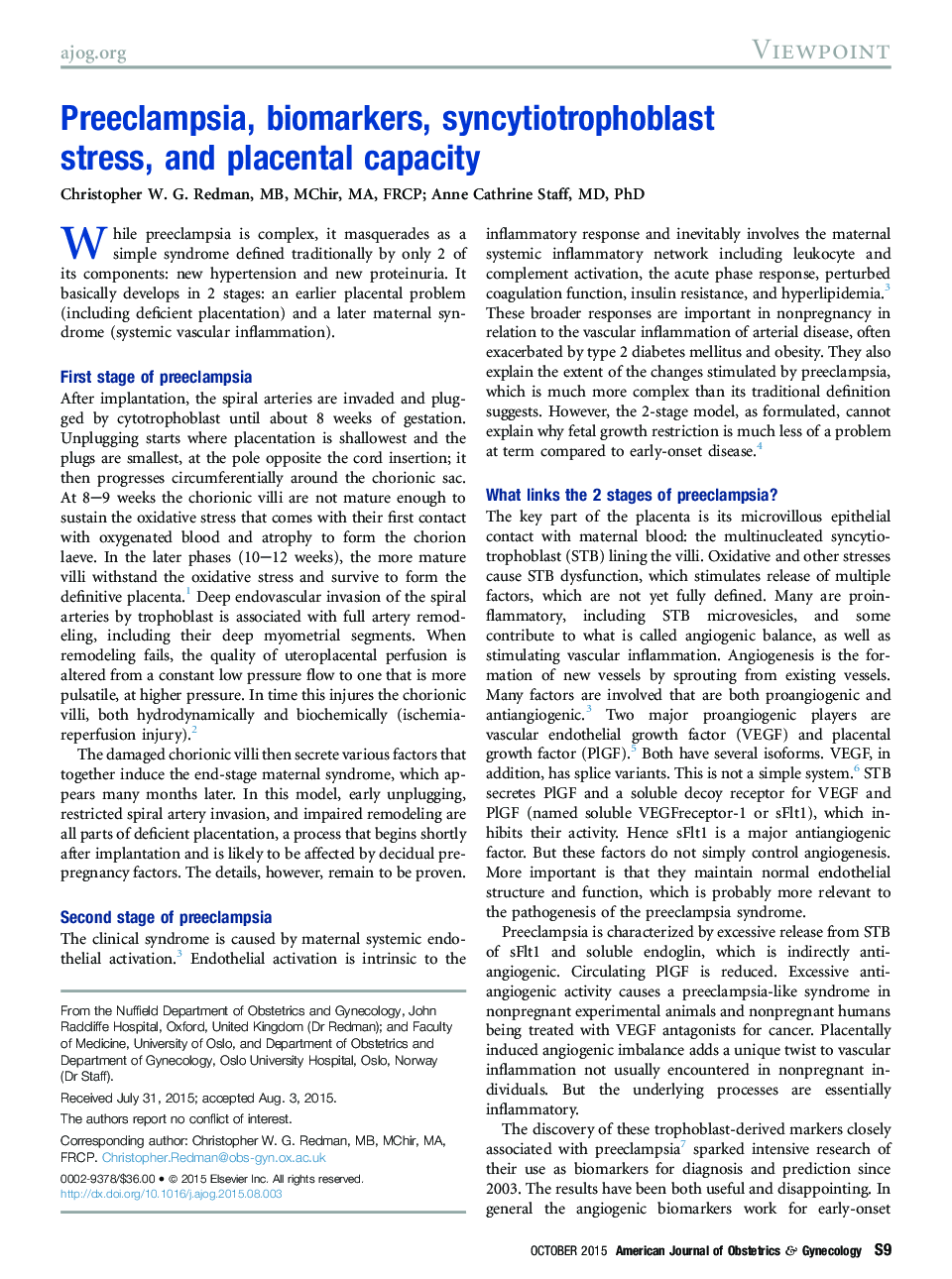| کد مقاله | کد نشریه | سال انتشار | مقاله انگلیسی | نسخه تمام متن |
|---|---|---|---|---|
| 3432703 | 1594901 | 2015 | 4 صفحه PDF | دانلود رایگان |
عنوان انگلیسی مقاله ISI
Preeclampsia, biomarkers, syncytiotrophoblast stress, and placental capacity
ترجمه فارسی عنوان
پره اکلامپسی، بیومارکرها، استرس سینسیتیوتروفوفلست و ظرفیت جفت
دانلود مقاله + سفارش ترجمه
دانلود مقاله ISI انگلیسی
رایگان برای ایرانیان
کلمات کلیدی
استرس سلولی، فعال سازی سلول اندوتلیال، آسیب مجدد ایسکمیک، میکرو ذرات، عامل رشد جفتی اندوگلین محلول گیرنده 1 فاکتور رشد اندوتلیال عروقی حلقوی، التهاب عروقی سیستمیک،
موضوعات مرتبط
علوم پزشکی و سلامت
پزشکی و دندانپزشکی
پزشکی و دندانپزشکی (عمومی)
چکیده انگلیسی
The maternal syndrome of preeclampsia is mediated by dysfunctional syncytiotrophoblast (STB). When this is stressed by uteroplacental malperfusion, its signaling to the mother changes, as part of a highly coordinated stress response. The STB signals are both proinflammatory and dysangiogenic such that the preeclamptic mother has a stronger vascular inflammatory response than normal, with an antiangiogenic bias. Angiogenic factors have limitations as preeclampsia biomarkers, especially for prediction and diagnosis of preeclampsia at term. However, if they are recognized as markers of STB stress, their physiological changes at term demonstrate that STB stress develops in all pregnancies. The biomarkers reveal that the duration of pregnancies is restricted by placental capacity, such that there is increasing placental dysfunction, at and beyond term. This capacity includes limitations imposed by the size of the uterus, the capacity of the uteroplacental circulation and, possibly, the supply of villous progenitor trophoblast cells. Limited placental capacity explains the increasing risks of postmaturity, including preeclampsia. Early-onset preeclampsia is predictable because STB stress and changes in its biomarkers are intrinsic to poor placentation, an early pregnancy pathology. Prediction of preeclampsia at term is not good because there is no early STB pathology. Moreover, biomarkers cannot accurately diagnose term preeclampsia against a background of universal STB dysfunction, which may or may not be clinically revealed before spontaneous or induced delivery. In this sense, postterm pregnancy is, at best, a pseudonormal state. However, the markers may prove useful in screening for women with more severe problems of postmaturity.
ناشر
Database: Elsevier - ScienceDirect (ساینس دایرکت)
Journal: American Journal of Obstetrics and Gynecology - Volume 213, Issue 4, Supplement, October 2015, Pages S9.e1-S9.e4
Journal: American Journal of Obstetrics and Gynecology - Volume 213, Issue 4, Supplement, October 2015, Pages S9.e1-S9.e4
نویسندگان
Christopher W.G. MB, MChir, MA, FRCP, Anne Cathrine MD, PhD,
